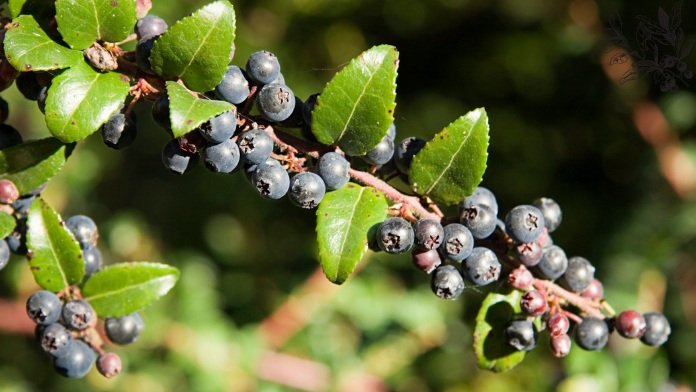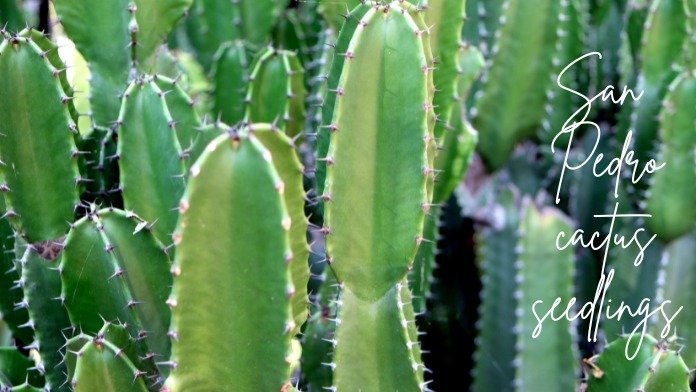Huckleberries Seedling: Easy Steps to Growing And Caring Seeds
September 9, 2024 | by Noor Nahar Tarin

A young plant that has just begun to sprout from seed is called a huckleberry seedling. It is in its early stages of growth, usually with a few tiny leaves on a little stem.At this stage, the seedling is vulnerable and needs to be nurtured to become a mature huckleberry plant, specifically the common huckleberry (Gaylussacia baccata) found in the eastern United States.
This care includes providing enough sunlight, water, and the correct soil conditions. Any species of tiny, fruit-bearing shrubs of the family Ericaceae, Gaylussacia, are known as huckleberries. The Andes, other hilly parts of South America, and eastern North America are all home to the plants. Huckleberry fruits are similar to blueberries in taste. Huckleberries might be the ideal fruit to add to your garden if you want something different and delectable.
These little yet delectable berries make delicious pies, preserves, and light snacks. However, starting from scratch can seem intimidating. Be at ease! Everything you need to know, from knowing the differences between huckleberry kinds to knowing when and how to plant your seedlings, will be covered in this book.
Huckleberries: What Are They?
Huckleberries are round, little berries with a taste unique to blueberries. Their flavour is frequently compared to a tart blend of blueberries and cranberries. These plants are indigenous to North America and do well in hilly and wooded areas. Depending on the variety, huckleberries can be deep blue, almost black, or red.
Huckleberry Plant Types: Comparing Garden and Wild Huckleberries
Garden and wild huckleberries are the two main varieties of huckleberries.
Huckleberry Mountain
The mountain huckleberry (Vaccinium membranaceum), sometimes referred to as the Montana huckleberry, globe huckleberry, thin-leaf huckleberry, and mountain bilberry, yields berries with good to exceptional flavour that are red, blue, purple, black, and even white. Idaho’s state fruit, the most extensively harvested western huckleberry, is this one. One to four feet tall are the shrubs. Zones 5–9
Huckleberry in Black
The dense thickets of black huckleberry (Gaylussacia baccata) grow to a height of 3 feet and a width of 4 to 5 feet. The best place to plant this huckleberry is in a woodland area where wildlife can benefit from the blue-black berries it produces. On slopes, it is also helpful in preventing erosion. In the fall, the leaves become scarlet and orange. Zones 3-6: Botanical Huckleberries.
These are typically more pest-resistant and simpler to grow in a home garden. They typically bear bigger fruits and mature more quickly. However, in comparison to wild varieties, their flavour is typically milder.
Evergreen Huckleberry
The evergreen huckleberry, also known as box huckleberry (Vaccinium ovatum), is a native of Oregon that can be found throughout the Pacific Coast, extending from Northern California to British Columbia. This tidy, erect shrub bears blue-black berries in late summer, reaching a height of eight feet. Zones 3–7
What Kind of Plants Are Huckleberry?
Small shrubs and huckleberry plants typically grow to one to three feet, while certain types can grow as high as ten feet. Their petite, bell-shaped blooms bloom in shades of pink or white, and their leaves are usually oval with smooth edges. Once it has flowered, the plant yields small, spherical berries, typically crimson or blue-black.
When Should Huckleberry Seeds Be Planted?
Early spring is the ideal time to plant huckleberry seeds when there is no chance of frost. This scheduling allows seeds to take root during the mild, growth-promoting months. On the other hand, you can start huckleberry seedlings indoors as early as late winter.
How to Plant Seed for Huckleberries
Huckleberries are a satisfying plant to grow from seed, but it takes time and careful attention to detail. Here’s a detailed how-to:
Select Your Seeds: Start with premium mountain huckleberry seeds or other locally appropriate types.
Get the Soil Ready: Huckleberries want Soil that drains well and is acidic. If needed, add organic matter or peat moss to get your Soil to the ideal pH range of 4.5 to 5.5.
Plant the Seeds: If the weather is regularly above freezing, sow the seeds directly in your garden bed or in a seed tray approximately 1/8 inch thick.
Establish the Proper Environment: Ensure the Soil is constantly damp but not drenched. Huckleberry seeds require sunshine to germinate, so they get six hours or more of sunlight each day.
Transplanting: The seedlings can be moved to their new place with at least two sets of genuine leaves. Observe the proper huckleberry seedling spacing for maximum growth. On average, plant the seedlings 3–4 feet apart.
Huckleberry Growth Rate of Seedlings
Several variables, including climate, soil quality, and variety, influence huckleberry seedling growth rate. Huckleberry seedlings usually grow slowly in their first year. It could take the plant two to five years to mature and start bearing fruit. To hasten growth, give the Soil regular moisture and the right amount of space, and make sure it stays rich in organic matter.
Methods for Growing Huckleberry
Huckleberry plants can be propagated through cuttings, seeds, or division. Divisions are the quickest route to fully grown fruiting plants. Cuttings and seeds typically take ten years or longer to bear significant fruit, but they often do so in three to five years.
Division
- It’s simple to grow huckleberry bushes by division.
- The bushes don’t have a core root system since their underground stems disperse them.
- Dig up a large enough root clump to fill a 3- to 5-gallon bucket in late fall or early winter, then fill the bucket with potting Soil.
- Give the plant plenty of water and a year or two to recover in the container. When planting it, dig a hole twice as big as the root ball, fill it with a lot of organic debris, and backfill it.
- Give the plant lots of water and cover it with mulch.
Seed
- Sow the seeds inside four to six weeks before your last spring frost after soaking them for a full day to soften them.
- After you cover them with 1/4 inch of water, they should sprout in approximately two weeks.
- Make sure the seedlings get five hours a day in direct sunlight.
- When the plants are 2 inches tall, pot them and transplant them into the garden in the early summer.
Cuttings
- In late winter or early spring, take 4-inch cuttings, bury them in damp sand flats, and cover them with clear plastic.
- Plant them in 1-gallon containers with potting Soil after their roots are 2 inches long.
- When they are 6 inches tall, plant them 3 feet apart in the garden.
Harvesting Huckleberries
Huckleberry bushes bear fruit in three to four years, and a complete crop should be ready in five or six years after planting.
Huckleberries ripen in September and August. When the berries are easily plucked from the vine and have turned a deep blue or purple, they are ready to be picked.
Growing Zones for Huckleberries
Success in cultivating huckleberries requires an understanding of your growth zone. USDA zones 4 through 8 are suitable for huckleberries, depending on the cultivar. They do well in colder temperatures and are frequently found at higher altitudes. Nonetheless, in slightly warmer climates, certain garden cultivars can be grown.
Huckleberry Planting and Seedling Spacing Advice
Proper spacing is essential for the healthy growth of huckleberry seedlings. Three to four feet apart gives each plant ample space to spread out, which also aids in halting the spread of pests and illness. To ensure a healthy start, dig a hole twice the size of the root ball and add organic debris.
How to Maintain Plants with Huckleberries
A few crucial actions are involved in huckleberry plant maintenance:
Watering: Huckleberries require regular hydration, particularly in the dry season. Make sure to water deeply but only a little
Mulching: To keep plants wet and keep weeds at bay, spread a layer of mulch around the base of the plants.
Pruning: Prune your plants annually to encourage new growth and eliminate unhealthy or dead branches.
Fertilizing: To promote growth, apply a balanced, slow-release fertilizer once a year in early spring.
Where to Purchase Huckleberry Seedlings
It’s simpler than ever to find huckleberry seedlings for sale. From garden huckleberries to mountain huckleberries, some online nurseries provide a variety of berries. When purchasing, seek out reliable vendors who provide wholesome, disease-free plants.
Problems and Pests
Huckleberry bushes are typically unaffected by pests and illnesses. Aphids, mealybugs, and spider mites can occur but normally don’t create major issues. Use a hose to spray them off, manually pick them off, or apply neem oil to get rid of them.
FAQ
How much time does it take huckleberries to grow?
Huckleberries grow slowly; it may take two to five years to mature and bear fruit.
Is It Possible to Grow Huckleberries Inside?
Although difficult, huckleberry seeds can be started indoors, and the seedlings can be transplanted when strong enough.
Are Full Sun Needed for Huckleberries?
Huckleberries much prefer some shade over direct sunlight. Some shade can also help avoid leaf scorch in warmer areas.
In summary
Huckleberry cultivation from seed or seedlings is a rewarding gardening endeavour with both gastronomic and aesthetic benefits. With the appropriate knowledge and care, you can successfully nurture these delectable berries and savour their distinct taste for years. These pointers can assist in guaranteeing a bountiful harvest whether you’re planting in a smaller backyard garden or a larger area.
RELATED POSTS
View all


